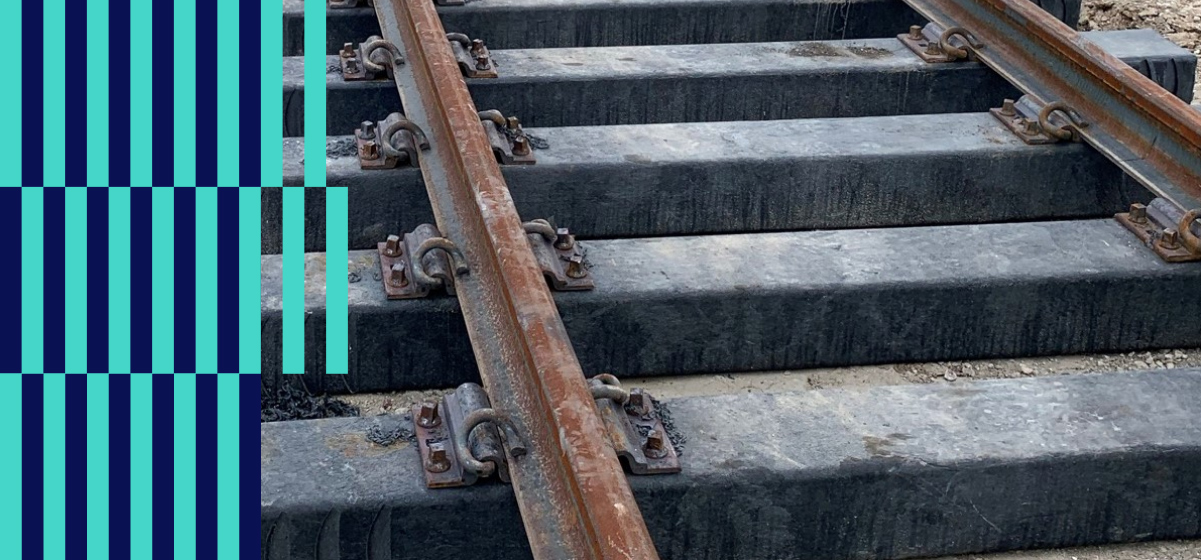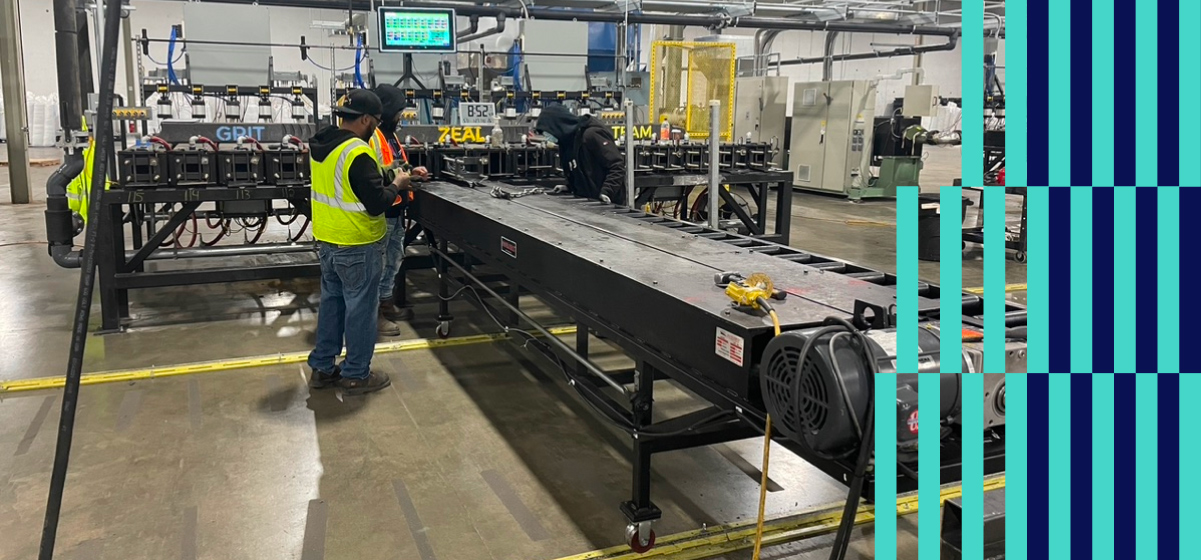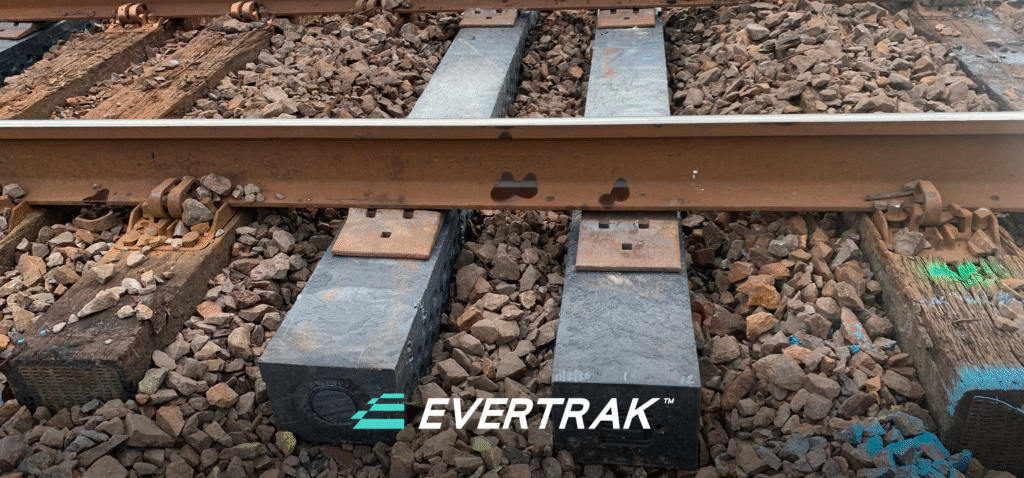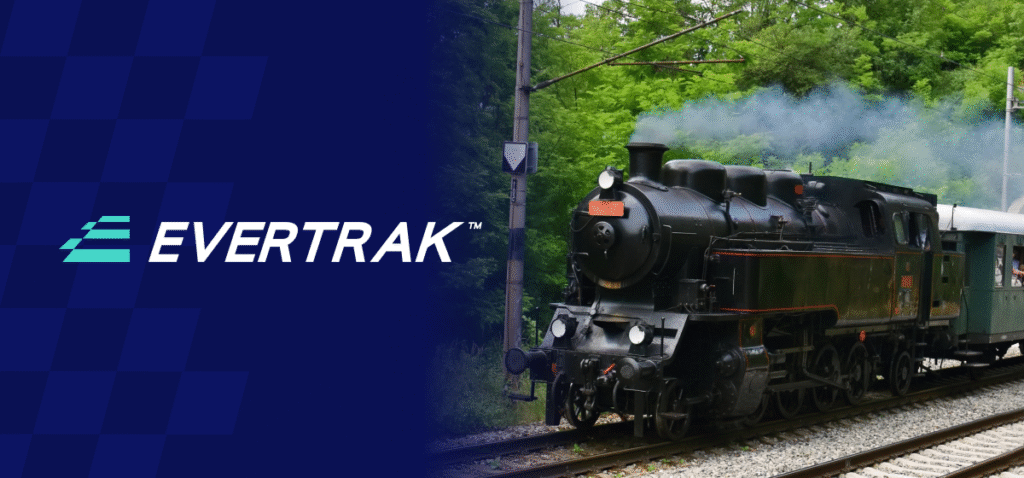At Evertrak, reaching the milestone of one million Glass Fiber Reinforced Polymer (GFRP) composite railroad ties is an exciting production achievement for our team—but it represents something beyond that. This milestone marks a fundamental transformation in how the railroad industry approaches infrastructure sustainability. Each Evertrak GFRP composite tie functions as a critical component in developing a circular economy for plastics while delivering superior performance compared to traditional wooden ties.
One Million Steps Toward Sustainability
The significance of one million composite railroad ties extends well beyond the immediate replacement of wood with recycled materials. This scale triggers a cascade of environmental, economic, and operational benefits that compound over time. While North American railroads replace approximately 22 million wood ties annually, the production of one million Evertrak ties creates the momentum needed to drive broader adoption of sustainable infrastructure solutions across the industry.
The compounding benefits of reaching this scale demonstrate why the railroad industry stands at a pivotal moment. The choices made today about infrastructure materials will determine whether future generations inherit a system built on diminishing natural resources or one that transforms waste into lasting value.
One million composite ties represents just the beginning of what’s possible when circular economy principles drive railroad infrastructure decisions.
Recycled Materials: Turning Waste into Infrastructure
The environmental impact of sequestering 180 million pounds of plastic through one million composite railroad ties is as exciting as it is encouraging. At scale, this creates significant demand for post-consumer and post-industrial plastic waste, strengthening recycling economics throughout the supply chain.
With only 9% of plastic waste recycled globally, Evertrak’s manufacturing process creates powerful economic incentives for diverting plastic from waste streams into high-value, long-lasting infrastructure. Unlike short-lived consumer applications of recycled plastic, railroad ties sequester this material for decades, creating what our CEO Tim Noonan often calls a “plastic forest” with lasting environmental and economic value.
The circular economy demands real financial incentives, and composite railroad ties deliver that economic imperative. By transforming plastic waste into critical infrastructure components that outperform traditional alternatives, Evertrak demonstrates sustainable solutions can drive both environmental and business value simultaneously. This is a circular economy in action—creating economic incentives that align environmental benefits with business performance.
Forest Conservation: Protecting 250,000 Mature Trees

One million Evertrak ties save approximately 250,000 mature hardwood trees from being harvested for railroad infrastructure. And this conservation impact becomes increasingly important as the availability of suitable hardwood for railroad ties continues to diminish. The railroad industry has effectively already harvested all the old-growth trees once considered ideally suited for infrastructure applications. That leaves only new-growth wood, and it simply doesn’t perform as well, even when treated with preservatives.
Forest conservation through composite tie adoption delivers multiple ecological benefits. Mature trees provide essential carbon sequestration, wildlife habitat, watershed protection, and biodiversity support. By reducing timber demand for hardwood ties, composite materials contribute to global forest conservation efforts while addressing the performance limitations of available wood resources.
The environmental equation becomes even more compelling when considering that these 250,000 trees remain standing as living carbon sinks. The alternative is being harvested, treated with chemicals, and eventually disposed of after a relatively short service life. The preservation of these forest resources represents an environmental asset that appreciates over time as these trees continue growing and supporting ecosystem services.
Chemical Elimination in Railroad Ties
Traditional treated wood ties require chemicals to prevent rapid deterioration. About 98% of wooden railroad ties are treated with creosote. Wood ties treated with this known carcinogen pose serious health and environmental risks. One million composite ties eliminate the need for the use of such toxic preservatives.
This chemical elimination prevents hazardous substances from leaching into soil and groundwater along the tracks. And the environmental benefits extend beyond chemical reduction to include improved safety and reduced health risks for railroad workers and communities adjacent to rail lines. As regulatory restrictions on creosote and similar preservatives continue to tighten, the value of chemical-free alternatives becomes increasingly apparent.
The important shift toward chemical-free infrastructure also aligns with growing expectations for corporate environmental responsibility and regulatory compliance.
Infrastructure Resilience: Building for Longevity

The extended service life of composite ties also transforms maintenance cycles for railroad infrastructure.
Evertrak 7000 ties are engineered to perform reliably for up to 50 years. This lifespan is five times longer than wood ties, especially in challenging environments where moist climates, rotting, and biological decay accelerate replacement needs. This longevity is more cost effective and improves operational reliability.
Because wood ties in high-decay zones typically last only 8-12 years, railroads must plan for frequent replacement operations that disrupt service and consume resources. By extending the replacement cycle through composite technologies, railroads can develop more predictable maintenance schedules with fewer service interruptions. This operational stability becomes increasingly valuable as freight volumes continue growing.
The consistent performance properties of composite ties across extreme environmental conditions further enhance infrastructure resilience. Unlike wood ties, whose properties deteriorate unpredictably over time, GFRP composites maintain their structural integrity throughout their service life. This consistency enables more precise engineering calculations and greater confidence in infrastructure performance over time—particularly important as climate patterns become more unpredictable and extreme.
Supply Chain Strength: Weather-Proofing Rail Infrastructure
Speaking of increasingly unpredictable climate events, extreme weather and related natural disasters in recent years have demonstrated the vulnerabilities of wood tie supply chains. Last year’s Hurricane Helene devastated Southeastern U.S. forest inventories. Georgia alone saw an estimated 8.8 million acres of timberland affected, totaling $1.28 billion in economic damages. These climate-related disruptions create complex challenges for timber utilization and railroad tie procurement.
One million composite ties reduce this vulnerability by eliminating dependence on increasingly constrained timber resources. By opting for recycled plastic—a material that grows more abundant each year—composite tie manufacturing creates a more resilient supply chain less susceptible to natural disasters, resource depletion, and market volatility. This strategic advantage becomes particularly valuable as climate-related disruptions become more frequent and severe.
Carbon Impact: A Lifecycle Perspective
When evaluating the environmental benefits of one million composite ties, the carbon equation must consider the full lifecycle impact.
The extended service life of composite ties means fewer manufacturing and replacement cycles over time, substantially reducing the carbon emissions associated with railroad infrastructure maintenance. The carbon impact calculation becomes even more favorable when considering forest preservation. As discussed, 250,000 trees are saved by manufacturing one million composite ties. This preservation effect compounds over decades as these trees grow and absorb additional carbon dioxide.
From a full lifecycle perspective, the carbon benefits of composite ties extend beyond direct emissions to encompass the atmospheric carbon absorbed by preserved forests, the emissions avoided by reduced maintenance operations, and the climatic benefits of diverting plastic from waste streams where it might otherwise release methane and other greenhouse gases during decomposition. This comprehensive approach to carbon accounting reveals the substantial climate benefits of sustainable railroad infrastructure.
Jobs in Manufacturing: The Economic Ripple Effect

Scaling production to one million composite ties creates significant economic opportunities across multiple sectors. For example, the composite tie value chain supports employment in plastic collection, processing, materials science, engineering, transportation, and installation services.
Transitioning to composite railroad ties involves specialized manufacturing processes. When compared to wood tie production, this innovative path creates demand for jobs that are higher-skilled and come with better pay. As demand grows for sustainable rail solutions, so does the need for workers skilled in advanced manufacturing techniques.
Job creation in this sector will extend to supplier relationships, transportation services, and the local service economies surrounding manufacturing facilities. Local communities will also benefit from the economic resilience that grows alongside innovations in green infrastructure.
Composite Railroad Tie: Scale and Innovation
Reaching the one million tie milestone enables further innovation through economies of scale and manufacturing optimization. As production volumes increase, the cost structure improves while performance continues advancing through ongoing research and development. This virtuous cycle drives both economic and environmental benefits as the industry transitions toward sustainable infrastructure.
Strategic partnerships accelerate this innovation trajectory. Evertrak’s collaboration with Sumitomo Corporation and other industry leaders combines multinational resources with specialized expertise. This creates powerful alliances capable of transforming railroad infrastructure practices globally. These partnerships provide the capital, market access, and technical capabilities needed to scale composite tie adoption throughout the railroad industry.
The path forward involves continuous improvement in materials, manufacturing processes, and installation techniques. As production scales toward one million ties and beyond, each generation of composite tie technology builds upon previous innovations, creating increasingly compelling alternatives to traditional wood. This progress demonstrates how the railroad industry can lead in developing circular economy solutions that deliver both operational and environmental benefits.
A Million Ties, Millions of Benefits
One million Evertrak composite ties represent much more than a production milestone—they embody a fundamental rethinking of railroad infrastructure. The multifaceted impact spans environmental protection through plastic sequestration and forest conservation, operational improvements through extended service life and consistent performance, and economic benefits through supply chain resilience and job creation.
At Evertrak, the production of one million ties marks the beginning of this transformative journey toward truly sustainable railroad infrastructure.




